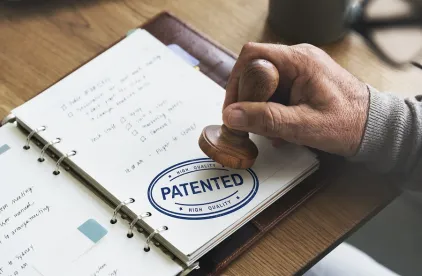The PTAB helpfully provides statistical data on the outcomes of AIA post-grant proceedings, including IPRs, CBMs, and PGRs. Current and historical statistics are available here.
While the types of data reported and the report formatting have changed over the years, starting in April of 2017, the PTAB began reporting outcomes of Petitions that reached final written decisions, in terms of how many Petitions result in (1) all challenged claims being held unpatentable, (2) some but not all challenged claims being found unpatentable, and (3) no challenged claims being found unpatentable. For example, in April 2017 the PTAB reported that of 1,554 petitions having been decided by Final Written Decisions since AIA proceedings began, 18% of those decisions found no challenged claims unpatentable, 17% of the decisions found some but not all of the challenged claims unpatentable, and 66% of the decisions found all challenged claims unpatentable, as seen from the chart below at the far right (reproduced from the PTAB report here):
The April 2018 report shows similar outcomes: of the 2127 Petitions decided by Final Written Decision by that time, 19% found no challenged claims unpatentable, 16% found some challenged claims unpatentable, and 65% found all challenged claims unpatentable.
The PTAB recently issued its April 2019 report, which facially appears to show similar numbers: of 2707 total Petitions decided by Final Written Decision, 19% found no challenged claims unpatentable, 18% found some challenged claims unpatentable, and 63% found all challenged claims unpatentable, as seen in the chart below (reproduced from the April 2019 PTAB report):
However, a closer look at the April 2019 statistics in comparison with the cumulative data reported a year earlier shows an interesting trend. Specifically, by comparing the data from the April 2018 and 2019 reports, one can deduce the outcome statistics from Final Written decisions issued in the twelve month period from May 2018 to April 2019.
During this twelve-month period, 580 Petitions were decided by Final Written Decision. Of those, 19% resulted in no challenged claims being found unpatentable – a remarkably consistent number from 2017 to 2019. Yet, a significantly higher percentage of Final Written Decisions (25%) found some but not all challenged claims unpatentable, while only 56% of decisions found all challenged claims unpatentable, down from the life-to-date average of 65% as of April 2018.
Thus, the past twelve month period has seen a pronounced uptick in the number of “split” decisions from the PTAB (16% → 25%), where some challenged claims are found unpatentable, while some are not. This uptick in split decisions directly corresponds with a lower percentage of decisions finding all challenged claims unpatentable (65% → 56%).
Over the past 12 months, the PTAB is issuing fewer “winner take all” decisions, and is increasingly likely to find partially for both Petitioners and Patent Owners. Potential reasons for this trend could be a conscious effort by the PTAB and Patent Owners to take a more comprehensive look at all challenged claims (as opposed allowing the challenge to stand or fall with a single claim), or the result of patent applicants drafting better claim sets with stronger dependent claims since the enactment of the AIA.




 />i
/>i


